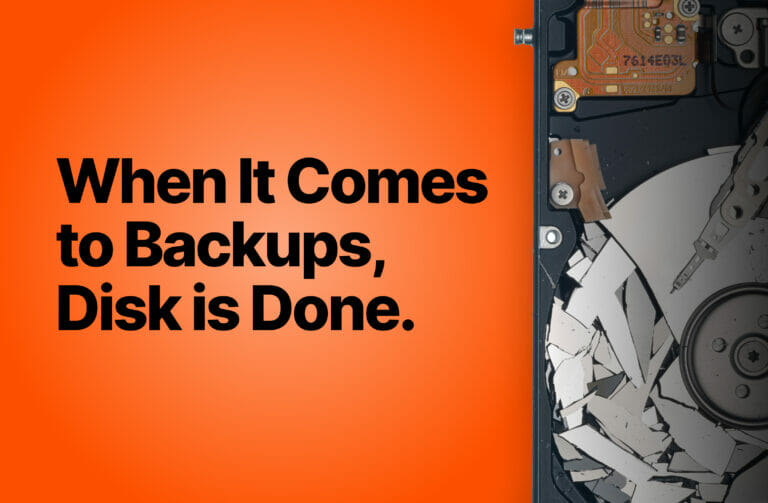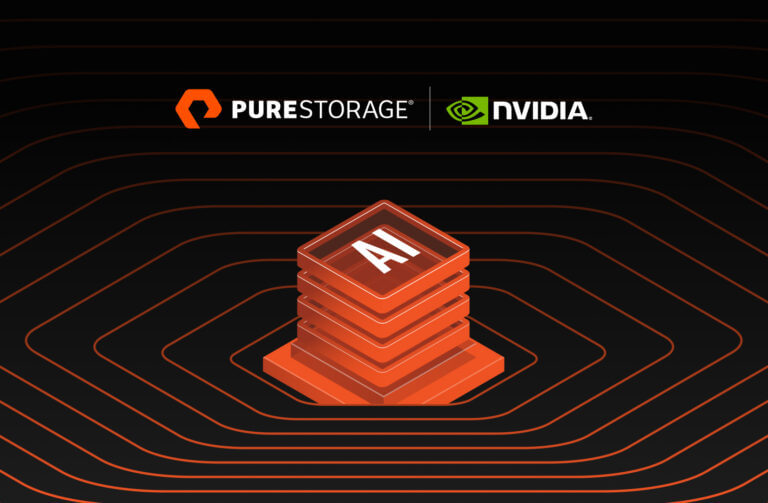I recently met with Joe McKendrick, lead analyst at Unisphere Research, to discuss the current state and future of data management and data security. Here’s an excerpt of our conversation. For the first installment, please see Part 1.
Nihal: Data security is front and center at the attention of the world’s corporate leaders and with good reason. How are enterprises handling issues such as ransomware?
Joe: To date, enterprises’ handling of security issues, especially ransomware, has been terrible and far too ineffectual. There are far too many organizations being shut down by bad actors hitting their data resources with ransomware. That’s why we need robust, instantly available storage infrastructure that can keep data out of harm’s way while ensuring instant recovery in the event of security incidents.
During Berkshire Hathaway’s 2017 annual shareholders’ meeting, Warren Buffett called cybercrime “the number one problem with mankind.” It’s hard to keep up and catch the culprits. According to the World Economic Forum’s 2020 Global Risk Report, the likelihood cybercriminals will be prosecuted is estimated to be as low as 0.05%.
Ransomware is a particularly egregious form of security breach. Cybersecurity Ventures’ latest ransomware forecast is for global ransomware damage costs to reach $20 billion by 2021—57x more than it was in 2015. The FBI is particularly concerned with ransomware hitting healthcare providers, hospitals, 911, and first responders, which would impact the physical safety of American citizens.
How Hospitals Can Improve Data Protection
Cybercrime Magazine says cyberthreats have expanded from targeting and harming computers, networks, and smartphones to people, cars, railways, planes, power grids, and anything with a heartbeat or an electronic pulse. Many of these things are connected to corporate networks in some fashion, further complicating cybersecurity.
Organizations need to double down on their security efforts, recognizing that it’s a business imperative to keep data safe and secure.
If there were any doubts about the viability of the cloud for data environments, they are completely gone.Joe McKendrick, Unisphere Research
Nihal: To what extent have the challenges of 2020 impacted database choices for businesses? Our own observations have been that 2020 was the year that moving to the cloud wasn’t just good business—it was essential for business continuity.
Joe: As mentioned above, the crisis has accelerated digital transformation efforts to digitize operations across the board. Now, digital-first has become the norm for most organizations and facilitated our ability to support remote work. Call it work from home or work from anywhere, particularly for professional and office-based work. With a widely scattered workforce—with potentially slower connections, there are increased risks of reduced application performance and slower access to data resources.
In addition, customers now expect businesses to offer online options for purchases. For example, we’ve seen an increase in retailers using their online properties as their primary sales channel and their physical stores as fulfillment centers.
Another change we’ve seen over the past year is the increased use of cloud databases and other online resources, and this is a trend that will continue. Major RDBMSs can be deployed to cloud infrastructure providers, as well as be hosted by the database vendors themselves. We also have a class of databases created and living in the cloud from day one that has become quite popular as organizations dispersed their operations.
If there were any doubts about the viability of the cloud for data environments, they are completely gone. However, handing over data operations to the cloud does not mean abdicating responsibility for the viability of the way data is maintained, stored, and accessed.
Nihal: In a survey we sponsored, we found that 90% of businesses use relational databases and 36% plan to additionally use open-source NoSQL databases in their environments. Has that been your experience as well?
Joe: NoSQL helped turn the database industry, which had been static for many years, on its head. Ongoing surveys with data managers by Unisphere Research show that relational databases continue to hold their place as both the biggest source of transactional data in most organizations and the biggest source of growth for transactional data. Scalability is the primary driver to implement NoSQL. Other attractive benefits are improved flexibility and decreased costs.
There has never been as much choice as there is in today’s database scene. Along with traditional commercial databases, a plethora of alternative databases is available that can cater to every enterprise need from advanced analytics to artificial intelligence and social media monitoring.
Relational databases are often thought of as too inflexible, too siloed, or too slow for today’s real-time requirements. However, they still power many of the most critical data environments across enterprises—both core legacy systems as well as new-age systems of engagement. Relational databases still serve an important role in enterprises—they are mature and stable and the SQL query language is powerful. Plus, most major programming languages are tied into relational databases.
NoSQL databases were once seen as peripheral databases with less robust features than SQL environments in terms of security, high availability, disaster recovery, replication modes, deployment modes, and so on. Now, however, they are ready for mission-critical enterprise deployments, incorporating essential features becoming more general purpose.
The move to NoSQL is driven by its ability to help companies achieve competitiveness and reach customers faster and more efficiently. NoSQL can be a force for business transformation—generating new sources of revenue, improving customer experience, and producing new data-driven insights that improve how the business interacts with its customers.
In addition, although they are not a traditional database vendor, we can’t talk about the cloud market without mentioning Amazon. They are a huge player and driver.
Nihal: Do data services have any role to play in this new era? What are the expectations of modern storage?
Joe: In the diverse data environments we’re describing, enterprises need to remain vigilant about their ability to secure, store, and manage data across these multiple platforms. That makes data services extremely important.
Data services will take many forms from organization to organization. This may encompass hybrid-cloud environments that take advantage of new forms of flexibility. Or, they may support a data warehouse environment that interfaces with a data lake, assuring access to both transformed and raw data. They may be focused on delivering real-time information to users or applications, or it may be built around data stores that provide intense, high-level analysis.
One thing is certain: Data services are now the core of digitally transformed enterprises, and, in a broader sense, the emerging digital economy. Much of the technology is in place to deliver intelligence to businesses at all levels. The challenge is identifying the data assets that will deliver growth and opportunity and matching it to the best technology and processes to carry the vision forward. It’s time for data managers and administrators to step up and help lead their businesses into this new realm.
The rise of data services also supports the continuing push toward self-service among business users, in which they have the ability to build their own front-end applications, as well as perform data queries and analysis with little to no intervention from their IT departments. Data services also speed up software development and delivery. Even the most compelling innovations and ideas for application services need to be delivered blazingly fast and with the right quality. Traditional software delivery based on manual work, complex programming languages, and scripting won’t deliver these capabilities. Providing end-users the ability to build and deploy their own data analytics applications as they are needed will help build a data analytics-driven culture from the ground up. Data-driven decisions need to be part of day-to-day business, not limited to the quants—data analysts and scientists.
This has profound implications for data security and storage, of course. Unfortunately, storage is often an afterthought, or worse yet, in this era of cloud, assumed to be handled by cloud providers. This is the wrong way to look at it, of course. Enterprises’ database managers need to think carefully about their storage strategies and how to provide continuous data resilience to their organizations—whether in the cloud, on-premises, or a hybrid of both. Think about it: Data is pouring in from all corners of the enterprise: from ERP, financial systems, production systems, customer relationship management systems, human capital management systems, and everywhere else inside and close to the enterprise. Data is also streaming in from devices, sensors, and systems across the Internet of Things. Add to this the data exhaust coming out of transactions, social media, or other engagement that no one really saw any use for until recently for advanced analytics, artificial intelligence, and machine learning.
This data growth, of course, is translating into very large databases and data sites that need to be managed. The presence of such massive amounts of data means greater care needs to be taken in keeping information highly available, without the loss of current data in the event of incidents or performance slowdowns.
Overall, data managers and administrators need to remain vigilant in their efforts to assure constant, uninterrupted delivery of data to their users and customers. It’s also important to develop robust data governance—or guardrails—to assure safe data movement and integration.
As it was for 2020, this year is also a period of great change and reliance on new ways of working. Data managers need to prepare for any situation with the flexibility and agility that today’s technology affords.
Pure Storage delivers a Modern Data Experience™ that empowers organizations to run their operations with a true, automated, storage-as-a-service model seamlessly across multiple clouds. Pure helps customers put data to use while reducing the complexity and expense of managing the infrastructure behind it while using best practices for data security. Get consistent, predictable performance and rapid response from your Microsoft, Oracle, SAP, and open-source web-scale applications. Save on operating costs with the industry’s best data reduction. Benefit from 99.9999% availability to help put an end to planned—and unplanned—downtime.
![]() For more on data security, check these out:
For more on data security, check these out:






